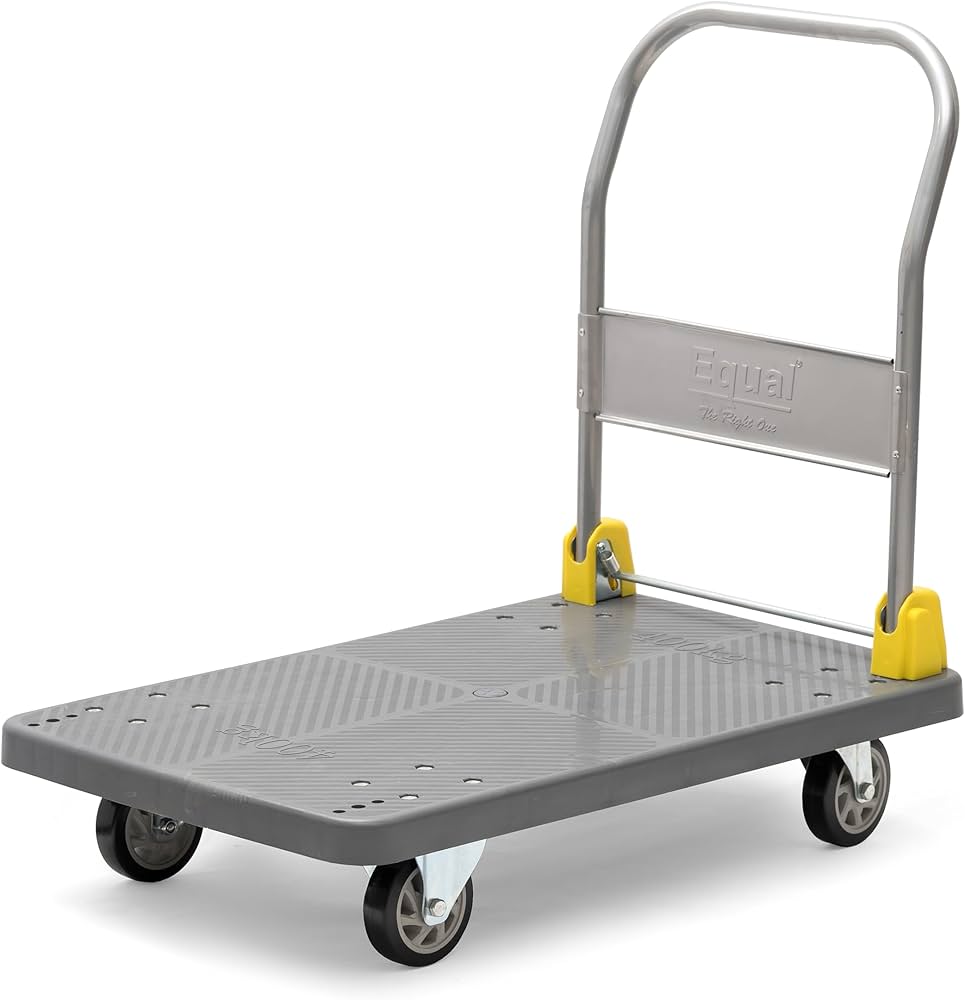When the trolley price is examined in isolation, it can also be mistaken by decision-makers as a cost rather than an investment. Initial expense is low compared to motorized material moving equipment, and service consists of little more than periodic lubrication and wheel changes. These savings are significant because the number of lost-time injuries, overtime for double-handling and prevention of product damage are all reduced and the initial outlay is soon dwarfed by these numbers. Also, trolleys hold their value – businesses expanding fleets can recoup a portion of their investment by selling used units to smaller operators. The fiscal benefits stack up: cheaper operating expenses, reduced compensation pay-outs and continued productivity means a thinner cost line and healthier profit margin.
The Next Generation of Platform Trolleys: Innovations Helping Drive Change
Even though the basic idea of a vehicle with wheels has been around for decades, there is still plenty of innovation underway. To help lower the tare weight without sacrificing the strength, a lightweight composite decks enables easier pushing and higher payloads within allowable of the pushing force limits. Among that, modular designs featuring removable side rails, fold-flat handles and stackable frames save storage space in compact facilities. Some manufacturers like equip2go have now integrated sensors that count distance travelled and log usage patterns for predictive maintenance.
Some use hard-surfaced, quiet-roll castors that incorporate sealed bearings to ensure a noiseless operation, which is ideal for noise-sensitive environments, such as hospitals and libraries. Even the good old brake has been developed, including a brake locker that is operated via a single pedal in the centre for use with all four wheels simultaneously, so it does not matter if the driver finds the correct lever or not. This progress is a testament to an industry intent on quietly perfecting safety and convenience with small but significant steps.
Coaching and Skill Development
Trolleys have a relatively low awake time entry compared to powered equipment but a proper induction is still a requirement. Operators should learn correct loading techniques, route planning principles to avoid steep gradients and procedures for travelling through lifts and doorways safely. This also includes safe parking to avoid vehicle runaway and inspection points. This rapid, efficient skill acquisition enables organizations to enrich the knowledge of temporary or seasonal staff so that safety protocols never have to be compromised, even in peak seasons. Refresher sessions within toolbox talks reinforce best practice and stave off complacency.
Telematics: Data-Driven Improvements
Even non-digital equipment has advantages from data-digital-link in ways that Industry 4.0 can shape supply chains. Some modern-day platform trolleys include low-energy Bluetooth tags that supply the movement data to warehouse management systems. Managers get to see over utilisation, congestion hotspots and maintenance cycles.
Analysing push distances helps teams redesign layouts to reduce travel paths to save time and effort. Castor wear is detected before damage occurs, allowing for proactive replacement and minimizing downtime through predictive analytics. By adding these digital layers, an analogue tool can now become an information asset, integrating material-handling behaviour with enterprise-wide smart-factory solutions.
If equipment is not used safely, it does not only pose a risk of injury in the short term but also implies a negative cost-benefit ratio in the long run as wellbeing is compromised. The daily wear and tear of heavy lifting repeatedly wears out joints and muscles and can leave you prone to chronic pain down the line. Platform trolleys decrease lifetime biomechanical wear and tear on the employees, prolonging their career by not exposing them to physical labour which exploits their health. Employers who take a proactive approach to ergonomic solutions create an environment that encourages wellbeing and not an afterthought.
Conclusion
While seemingly simple, platform trolleys have a powerful effect on safety and efficiency on the job. They make the manual lifts a smooth push, this reduces sprains and strains, increases productivity and they provide an affordable device that works in just about any industry. The argument for investing in good quality platform trolley is strong, from the ergonomic advantages that safeguard the backs of workers to the Lean components that enhance operational excellence.










